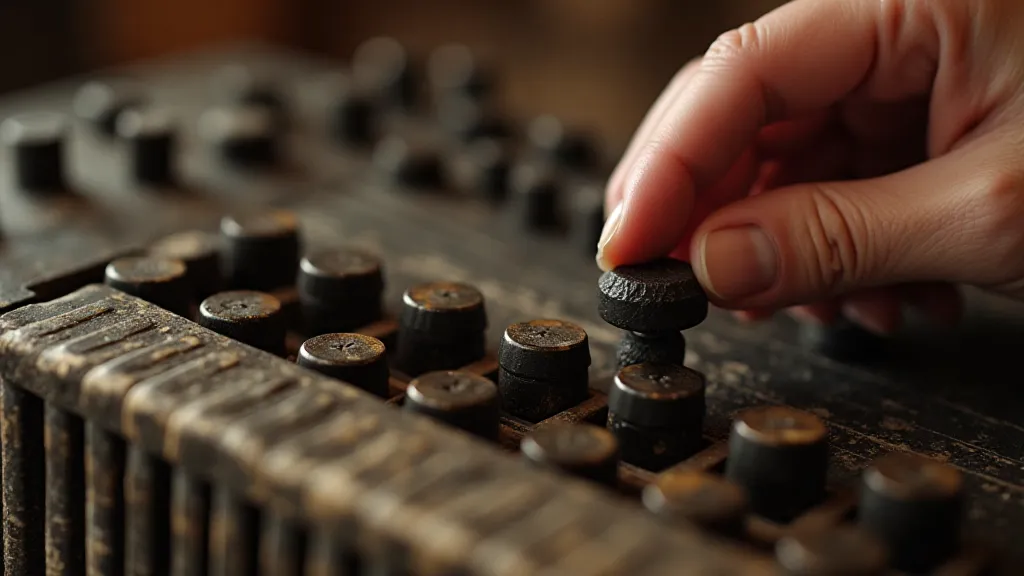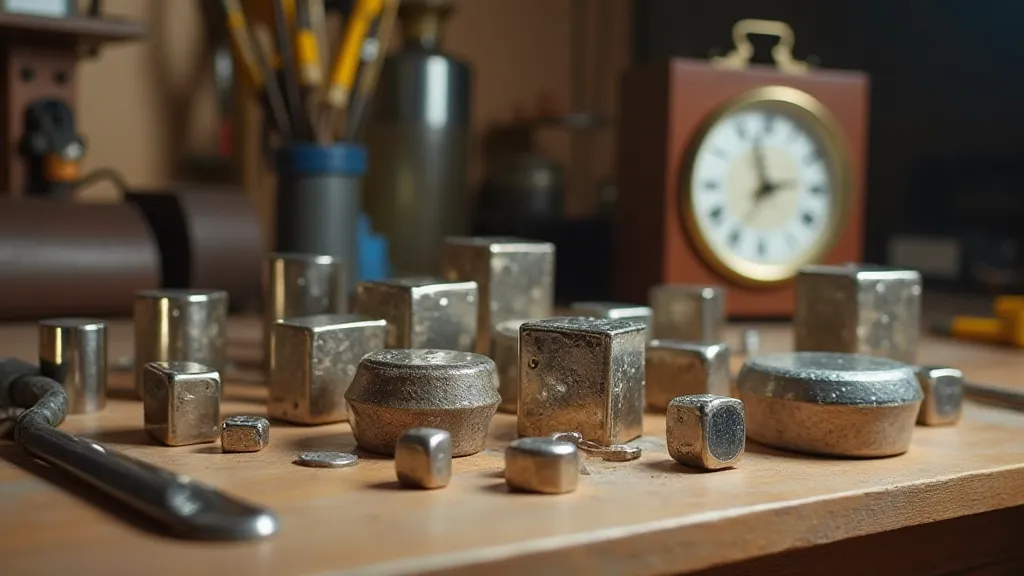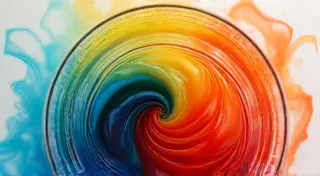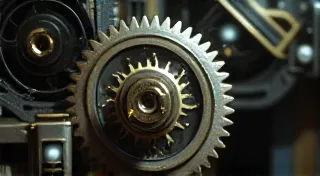The Siren's Pull: Magnetism and Optical Illusions
There's a certain allure to old things, isn't there? A whisper of history clinging to weathered wood, a resonance of forgotten hands. I’m thinking particularly of antique accordions. Their bellows, once filled with joyous melodies, now speak of lives lived and dances remembered. Holding one, you can almost feel the musician’s breath, the rhythm of their heart. But beyond the music, there's another, subtler fascination: the inherent physical realities that make them work – realities that, when explored creatively, can unlock captivating visual illusions. And that’s where the surprising dance of magnetism and optical trickery begins.
My grandfather, a meticulous clockmaker, had a deep appreciation for mechanics. He’s the one who first introduced me to the quiet beauty of precise engineering. He wouldn’t explain things in terms of formulas, but rather through demonstrations, letting the workings themselves reveal their secrets. He had a small collection of rare earth magnets – neodymium, primarily – that he’s sometimes used to stabilize delicate clock mechanisms. Watching him maneuver those tiny, powerful magnets, I understood there was a certain poetry in their force – a quiet strength that could hold things together, or create a captivating instability. This notion seeded an early fascination with how physical principles could be manipulated for artistic effect.
The Physics of Perception
Optical illusions aren’t about deceit; they’re about exposing the inherent biases and assumptions our brains make when interpreting visual information. We see patterns, depth, and motion, even when they aren’t definitively present. Magnetism, with its invisible field, presents an intriguing avenue to play with this inherent perception. Think about the way iron filings arrange themselves around a magnet – a beautiful, swirling pattern that suggests hidden forces. Can we translate this concept into a larger, more compelling visual experience?
Consider the classic “magnetic field viewer,” often used in classrooms. A sheet of plastic embedded with tiny iron filings, placed atop a magnet, reveals the invisible lines of force. But what if we moved beyond the simple circular patterns and began crafting three-dimensional sculptures, using magnets to create a constantly shifting, ethereal landscape? A small, rotating magnetic field, interacting with precisely placed iron filings, could evoke the feeling of a nebula, a shimmering galaxy suspended in mid-air. This pursuit of creating mesmerizing magnetic displays touches on the core principles explored in levitating echoes: Choreographing magnetic suspension, where the nuances of magnetic interaction and visual impact are deeply investigated. It's fascinating to think about how these principles might be applied to creating entirely new forms of art and entertainment. The manipulation of magnetic fields to generate visual phenomena is an area with potentially limitless creative possibilities.

Magnetic Levitation: Defying Gravity
Perhaps the most striking demonstration of magnetism’s ability to trick the eye is magnetic levitation. The idea of suspending an object in mid-air, seemingly defying gravity, is inherently captivating. It’s a visual paradox that challenges our understanding of physics. While large-scale magnetic levitation systems require complex technology, small-scale experiments with rare earth magnets can create surprisingly effective illusions. The principle of utilizing opposing magnetic poles to counteract gravity offers an accessible way to experience the wonder of defying established laws of physics.
The principles are relatively straightforward. Opposing magnetic poles attract, creating a force that can counteract gravity. However, achieving stable levitation is tricky. The slightest imbalance can cause the object to tilt and fall. Clever arrangements of magnets, often utilizing repelling forces to fine-tune the stability, are crucial. Building a simple magnetic levitation platform can be a fantastic introduction to the challenges and rewards of engineering with magnetic fields. Imagine the possibilities: miniature, floating sculptures, levitating displays, or even revolutionary transportation systems.
Imagine constructing a small, ornate box with a hidden magnetic base. Upon this base, you place a miniature sculpture – perhaps a tiny replica of an antique accordion – that floats effortlessly in mid-air. The visual impact would be stunning, a miniature world suspended between two realms. The intricate dance of magnetic forces required to create this effect highlights a broader philosophy of magnetic interaction, an exploration of which you can find in Polarity's Dance: Exploring Magnetic Opposition and Harmony. This delves into the complex interplay between attraction and repulsion, a fundamental concept in understanding magnetic behavior.
Accordion Restoration and the Magnet’s Role
My interest in accordions isn’t merely aesthetic; I've recently begun a slow, painstaking restoration of a 1920s instrument. It’s a humbling experience, realizing the skill and precision that went into its original construction. The bellows, for example, are a complex network of pleated leather, meticulously glued and reinforced. While magnets aren’t typically used in the primary mechanical functions of an accordion, they can play a surprisingly useful role in certain restoration tasks. The act of bringing an antique instrument back to life is a unique blend of artistry and technical skill.
Sometimes, the original reed placement, which dictates the instrument's tone, can become slightly displaced during years of wear and tear. Tiny, strategically placed magnets can be used to temporarily hold reeds in the correct position, allowing for precise adjustments and repairs. The gentle, controlled force of a rare earth magnet is far less likely to damage the delicate reed materials compared to more forceful methods. This is a testament to the versatility of magnetic force – an ability to act as a gentle guide in a complex process. The restoration process isn't always about replacing parts; often, it's about carefully guiding them back into their original positions.

Crafting Magnetic Art: Beyond the Basics
The possibilities extend far beyond simple demonstrations. Consider building a “magnetic kaleidoscope,” where a rotating magnetic field interacts with a bed of metal shavings, creating ever-changing patterns of light and shadow. Or perhaps a “magnetic sculpture garden,” a collection of small, suspended objects that subtly shift and rearrange themselves in response to variations in the magnetic field. The artistic use of these materials begs the question of what else can be accomplished through these innovative combinations. The intersection of art and science provides some of the most innovative approaches to crafting truly captivating experiences.
The key is to think about how magnetism can be used not just to create static visual effects, but to generate dynamic, interactive experiences. Imagine a large-scale installation, where viewers can manipulate the magnetic field with their hands, creating swirling patterns of light and movement. It's about transforming a scientific principle into a work of art – a mesmerizing dance of physics and perception. The creation of truly immersive and interactive art requires a deep understanding of the underlying principles governing light, movement, and interaction.
Safety and Considerations
Working with rare earth magnets, particularly neodymium magnets, requires caution. They are incredibly powerful and can pinch fingers or damage electronic devices. It’s also essential to keep them away from young children, who may be tempted to put them in their mouths. Furthermore, when dismantling antique instruments, it's vital to document each step, ensuring that the instrument can be accurately reassembled. These are small details, but crucial for preserving the historical integrity of the piece. The proper handling of such potent tools demands a certain level of awareness and respect for the potential consequences of misuse. It is important to remember that even seemingly benign scientific principles can pose risks if not handled with care and consideration. The responsible application of these tools is essential to avoid injury and potential damage.

The siren’s pull of magnetism lies not just in its power, but in its ability to reveal the hidden poetry of the physical world. By combining scientific understanding with artistic creativity, we can unlock captivating visual illusions and transform ordinary materials into objects of wonder. And sometimes, the best inspiration can be found in the quiet resonance of an antique accordion – a testament to the enduring power of craftsmanship and the subtle beauty of hidden forces. The exploration of magnetic fields extends far beyond the applications described here, and represents a growing field of scientific discovery with countless potential applications across numerous industries. Continued research into the manipulation of magnetic fields promises to unlock even more astounding feats of engineering and artistic expression in the years to come. The possibilities are truly limitless, and the future of magnetic innovation is bright. The intersection of physics, art, and engineering promises to yield incredible breakthroughs that will shape our world in profound ways. Consider the potential for advancements in areas such as medical imaging, sustainable energy, and transportation. These are just a few examples of the transformative potential of continued exploration and innovation.





